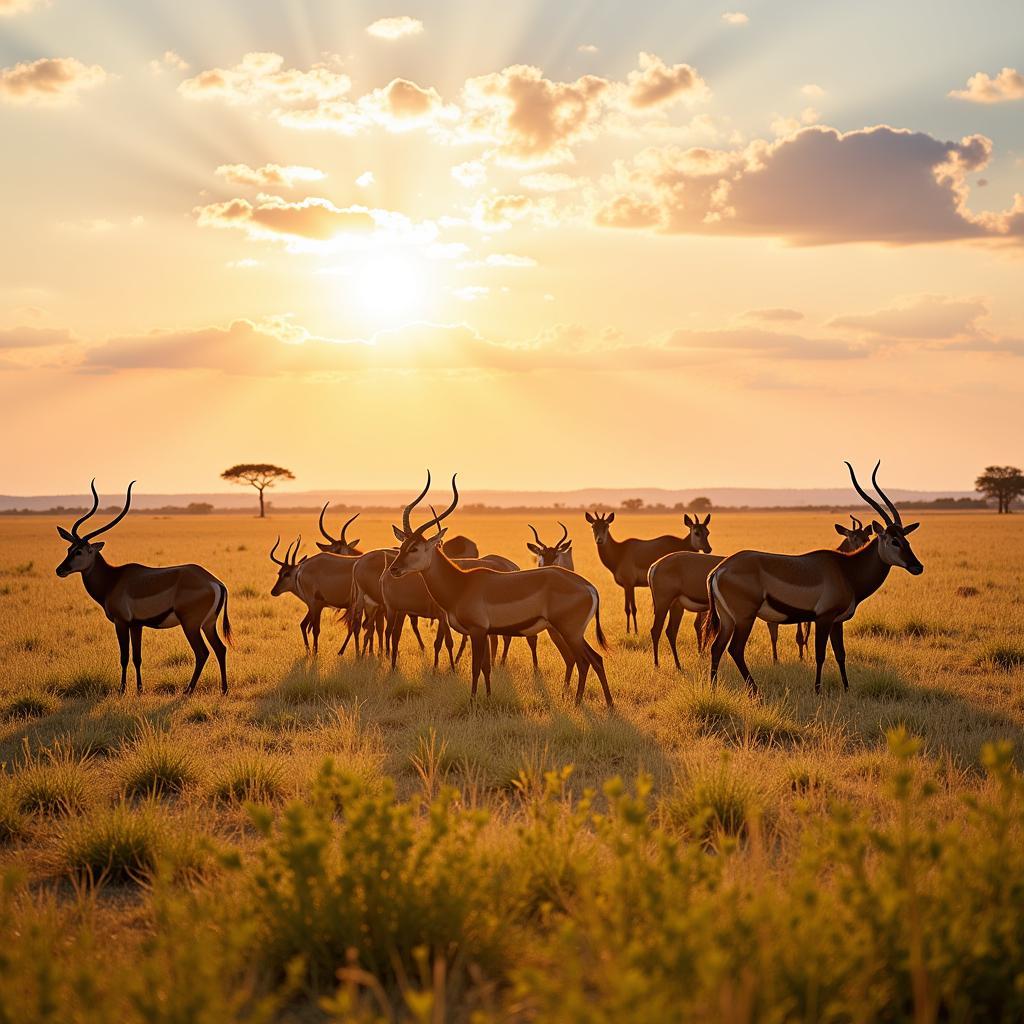The Art of Deception: Unveiling African Animal Camouflage
From the sun-baked savannas to the dense rainforests, African animals have evolved incredible adaptations for survival, and among these, camouflage reigns supreme. African Animal Camouflage is not merely about blending in; it’s a sophisticated dance of evolution, where survival hinges on outsmarting both predator and prey.
Masters of Disguise: Why Camouflage Matters
In the harsh realities of the wild, life thrives on a delicate balance. For prey animals, camouflage is the ultimate defense mechanism, a life insurance policy against becoming someone else’s meal. Imagine a nimble duiker, its dappled coat mirroring the sunlight filtering through the forest canopy, practically invisible to the prowling leopard.
For predators, camouflage is a hunting tool, allowing them to become invisible assassins, patiently waiting for the perfect moment to strike. The leopard itself, with its rosette patterns mimicking the play of light and shadow, embodies this deadly artistry.
Beyond the Stripes and Spots: Diverse Camouflage Tactics
African animal camouflage is incredibly diverse, extending far beyond the familiar stripes of a zebra or the spots of a leopard:
-
Background Matching: This is the most common type, where animals sport colors and patterns that mimic their surroundings. Think of the fawn’s reddish-brown coat, blending seamlessly with the dry leaves of its woodland home.
-
Disruptive Coloration: This strategy utilizes bold, contrasting patterns that break up the animal’s outline, making it difficult to distinguish as a single entity. The zebra’s stripes, confusing to a lion’s perception, exemplify this technique.
-
Countershading: Many animals, like crocodiles, have darker coloration on their backs and lighter bellies. This clever trick helps them blend in with the ground when seen from above and the sky when viewed from below.
A Chameleon’s Canvas: Color-Changing Wonders
The chameleon deserves special mention, its ability to change skin color transforming it into a living, breathing work of art. Contrary to popular belief, this color change is not solely about camouflage. It’s also influenced by factors like temperature, mood, and even communication.
Survival of the Fittest: The Evolutionary Arms Race
African animal camouflage is a testament to the power of natural selection. Over millennia, subtle mutations that offered better camouflage provided a survival advantage. Those individuals were more likely to avoid predators, find food, and reproduce, passing down their camouflage genes. This continuous interplay between predator and prey drives the evolution of increasingly sophisticated camouflage techniques.
Beyond the Safari: Appreciating Camouflage Close-Up
While a safari offers a glimpse into the world of African animal camouflage, African jungle mammals and other species reveal even more fascinating secrets. Consider the African desert fox crossword puzzle – a fun way to learn about the desert fox’s incredible ability to survive in one of the harshest environments on Earth. Or delve into the fascinating world of African frogs, many of which have mastered the art of camouflage to thrive in diverse ecosystems. For a captivating experience, tune in to African animals in Nat Geo Wild documentaries, which often showcase these camouflage strategies in action.
Even the unassuming African hedgehog habitat provides insights into how these prickly creatures utilize camouflage. Their spines, primarily for defense, also help them blend into the undergrowth, effectively hiding them from predators.
A Disappearing Act: The Future of Camouflage
As climate change alters habitats and human activities increasingly encroach upon the wild, African animal camouflage faces new challenges. Will these masters of disguise be able to adapt to rapidly changing environments? The answer remains to be seen, highlighting the urgency of conservation efforts to protect these remarkable creatures and their fascinating adaptations.
African Animal Camouflage: A Legacy of Survival
African animal camouflage is a testament to nature’s ingenuity, a captivating blend of science and art. Understanding these adaptations allows us to appreciate the intricate web of life on Earth and the constant struggle for survival that has shaped the beauty and diversity of the animal kingdom.

